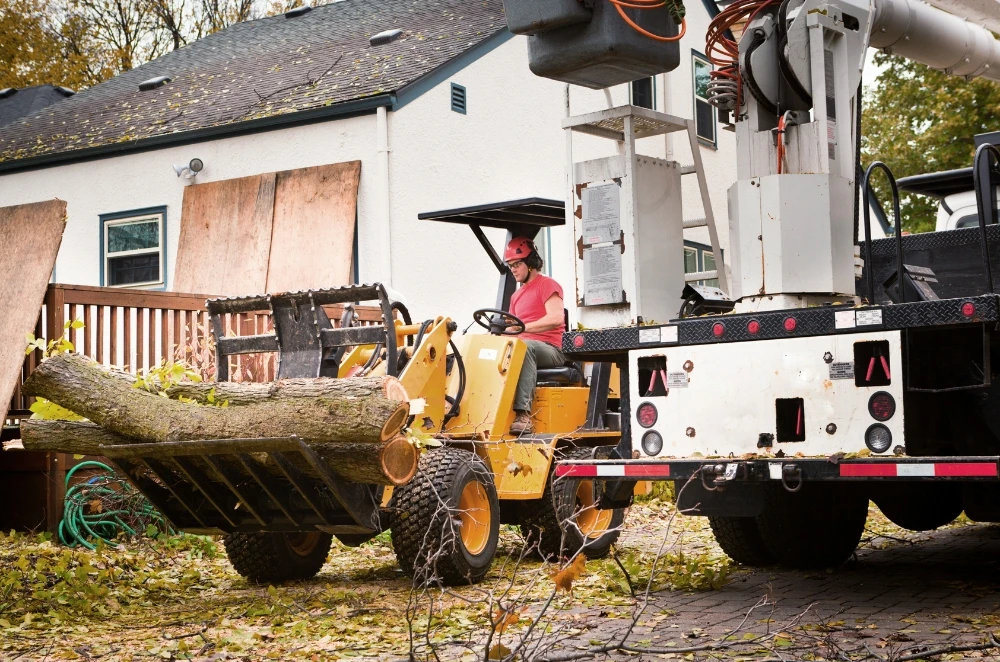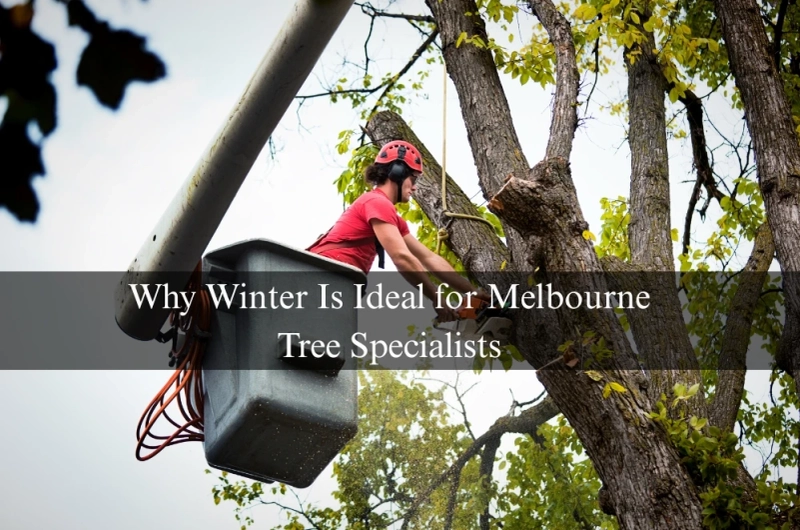If you’ve ever wondered when to call in the pros for your trees, winter might not be the first season that comes to mind. But ask any qualified arborist in Melbourne, and they'll tell you that this cooler season is often the most efficient, cost-effective, and strategic time to carry out tree work across the city’s backyards and public spaces.
While many homeowners wait for spring or summer to assess their gardens, seasoned tree specialists understand that winter brings lower sap activity, clearer canopy visibility, and fewer environmental variables — all of which allow for safer, cleaner, and longer-lasting results.
What makes winter tree work so effective?
Unlike northern climates that bring snow and frozen soil, Melbourne’s winters are cool and damp, but not too harsh. These mild conditions create an ideal window for both structural pruning and tree removal, particularly when it comes to:
- Reducing risks before spring growth surges
- Accessing dormant trees with better branch visibility
- Minimising sap loss and disease exposure
- Avoiding peak-season scheduling delays
In fact, for mature trees with thick foliage or complicated branch structures, winter work often makes the arborist’s job more precise and the result more balanced. You can see what’s dead, damaged, or rubbing, and address it without interfering with growing cycles.
Strategic pruning during dormancy
Winter is when most trees enter their dormancy phase — a natural rest cycle that slows internal functions. This biological “pause” gives arborists the green light to conduct larger structural work without compromising a tree’s long-term vitality.
Strategic pruning in winter allows for:
- Shaping without immediate regrowth interfering
- Removing dead wood without shocking the tree
- Thinning crowns to prevent wind resistance
- Clearing overgrowth that blocks sunlight or footpaths
This process not only improves a tree’s shape and strength but also reduces hazards during spring storms when new growth makes trees more top-heavy.
Tree safety and municipal compliance
Whether you manage a business, schoolyard, or large residential block, staying on top of tree risk management is a legal responsibility. Melbourne’s councils have guidelines around what’s considered acceptable pruning, when works must be permitted, and how nearby assets are protected.
Engaging a specialist during winter helps meet these expectations with less disruption. More importantly, it allows you to align with city policy around Melbourne urban tree management, which encourages responsible canopy care to preserve the health, safety, and aesthetic of public and private landscapes alike.
This includes:
- Maintaining clearance from power lines
- Managing root impact on footpaths
- Ensuring access for emergency and utility vehicles
- Protecting native species during active conservation windows
Tree specialists familiar with local guidelines can advise on how to proceed without breaching regulations or risking fines.
A real-world example: safer, smoother operations
Last June, I worked with a local medical centre in the inner north that had multiple large gums trees shadowing its front car park. They’d been delaying pruning for months, worried about noise, disruption, and parking access. But winter turned out to be the perfect time.
The crew started after 9 am each day — no rush hour disruption — and wrapped up before late afternoon darkness. With most foliage shed, they were able to clearly identify crossover limbs, dead branches, and even an early case of borer damage. The property manager later mentioned that staff felt safer walking under those trees, and the grounds looked cleaner and more open.
Without winter’s ideal timing, that project likely would’ve dragged across weeks, caused interruptions, or missed key structural issues.
Preventing winter hazards before they strike
Winter also happens to be when emergency callouts spike due to storms, winds, or heavy rains. Weak or unbalanced trees are more likely to suffer limb drop or even total failure during these events.
That’s where proactive inspection and emergency tree services in Melbourne come into play. By identifying vulnerable trees early — especially those near buildings, roads, or play areas — specialists can remove risk without the panic and premium pricing that usually follows storm damage.
What do arborists check for in winter?
- Signs of internal rot or fungal cavities
- Severe leaning or root destabilisation
- Cracked or split limbs under stress
- Hanging deadwood in the upper canopy
In many cases, minor work in June or July can prevent major insurance headaches by spring.
Site access and cost savings
Winter’s quieter landscape also means fewer logistical headaches. Trees are more accessible with fewer leaves, surrounding gardens are dormant, and equipment like cherry pickers or cranes can operate with minimal disruption.
For clients, that means:
- Less clean-up from fallen foliage
- Lower risk of lawn damage from machinery
- Better scheduling, availability, and pricing
- Shorter turnaround times for quotes and permits
Because arborists aren’t slammed with high-season demand, they can often book jobs faster and pass on savings. Plus, any necessary remedial planting or mulching can be done in time for spring regeneration.
Material recycling and mulching
Another benefit of winter tree work? You’re better positioned to convert pruned or removed material into mulch — a valuable resource for winter soil protection and moisture retention. Many arborists offer on-site chipping services, allowing you to repurpose tree waste into nutrient-rich ground cover for garden beds or council verges.
It’s a sustainable win for the property and a time-efficient solution that aligns with eco-friendly maintenance practices. Rather than hauling debris off-site, the material serves a second purpose almost immediately.
Tree removals are done safely in colder months
When a tree needs to go, whether for structural reasons, disease, or property development, winter offers the lowest-risk time for that work. With the surrounding vegetation sparse and fewer people using outdoor spaces, removals can proceed quickly and cleanly.
But removals, especially in winter, require experience. Wet soil can be unstable, wind can complicate felling, and visibility becomes crucial. That’s why it's smart to rely on professionals who prioritise safe tree removal in winter through smart rigging, weather planning, and trained crews.
For sites where excavation or rebuilding follows tree removal, getting this step done in winter helps set the stage for smoother spring construction.
Final thoughts on winter tree care in Melbourne
For homeowners, councils, and commercial property managers, winter might be the most underrated season for serious tree work. It’s calm, quiet, and efficient — ideal for pruning, risk management, and strategic removals.
More importantly, it gives certified arborists the chance to prepare your trees for the coming spring, whether that means shaping growth, reducing hazards, or making space for new plantings.
Working with a licensed arborist in Melbourne means aligning with seasonal expertise, local regulations, and cost-effective planning — all while giving your trees the care they deserve at the right time.
So instead of waiting until your trees are overgrown or stressed, consider taking advantage of this cooler season. You might be surprised at how much better your property feels when spring arrives.


